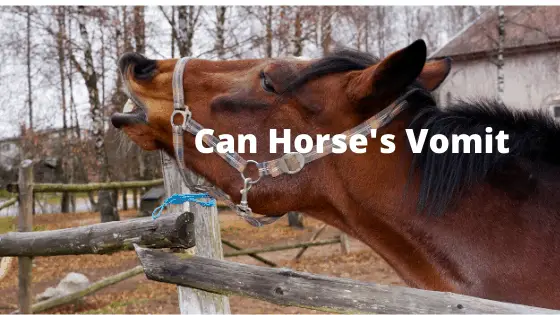Why Can’t Horses Vomit?
Why Horses can’t Vomit – It was the Sunday after Thanksgiving. We’d been out of town visiting family. When we got to where the horse was stabled, there were clear signs of colic. Large areas of the paddock had been swept into swirls where she had rolled. Her water barrel was knocked over. The horse was miserable.
Our daughter started walking the horse, part of the first aid for horses when they colic. I waited at the bottom of the hill to wave down the emergency vet. This was going to put a dent in our wallets, but the horse was more important. Why Can’t Horses Vomit?
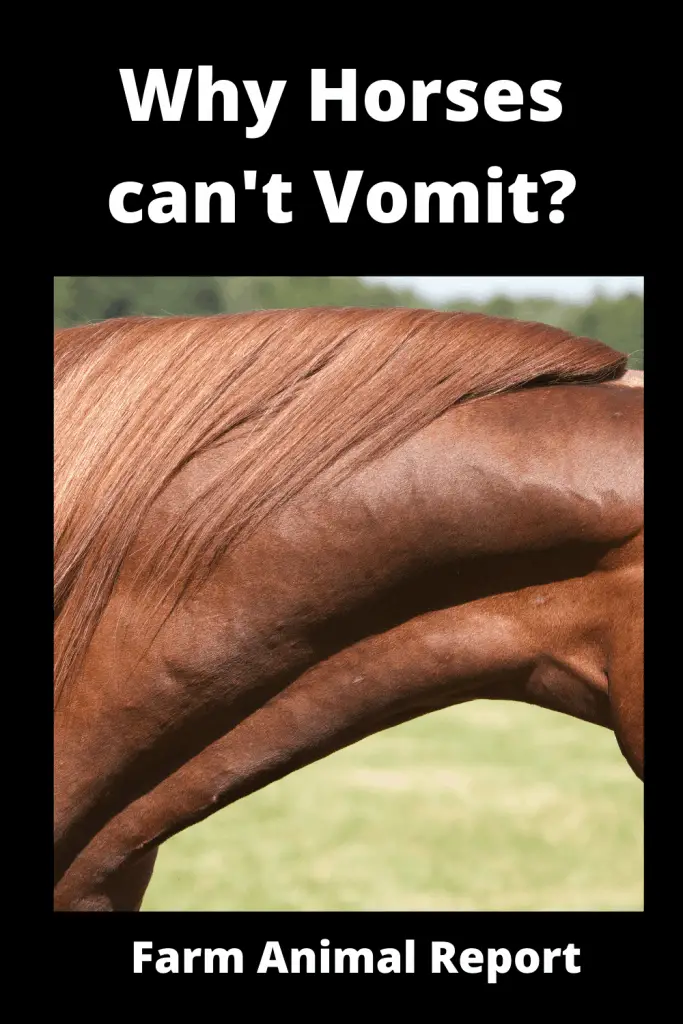
When she arrived, the horse wanted to roll again. The vet was a tiny woman, but she got Mear (the horse) to stand. She inserted a gastric tube down Mear’s throat via the nose. It looked like a clear piece of a water hose. She was very concerned because this was a bad case.
Check Out Amazon’s Resources for Raising and Training Horses
She gave Mear some pain medications and pumped green guck out of her stomach. There was debate about whether or not emergency surgery would be needed. Fortunately, the vet was able to pull off a miracle and the horse survived.
Together, we put together an aftercare plan. The vet was also a practitioner of acupuncture and did a treatment of that. . The licorice was for the sore throat from the gastric tube, the lavender was to help calm her down.
What causes colic in horses? Unlike many other mammals, horses cannot throw up. They can’t burp, either. Once something goes down the gullet, it can only come out one way naturally… the other end. The reasons include first of all an equine anatomy lesson.
The Equine Digestive System
The equine digestive system is both similar to and different from the human one. Unlike cattle, they have a single-chambered stomach, just like we do. However, our throat is measured in inches. Theirs are measured in feet. Even if they could throw up, that’s a long way to move stuff.
See Our Guide – 10 Ways Horse Farmers Make Money
The main difference between our systems in the regurgitation department is the sphincter between the esophagus and the stomach. We have one, as well. It is supposed to keep stomach acid in the stomach. In horses, the sphincter is the cardiac sphincter and is extremely strong. Horses don’t have to worry about acid reflux; nothing is going to come out of there.
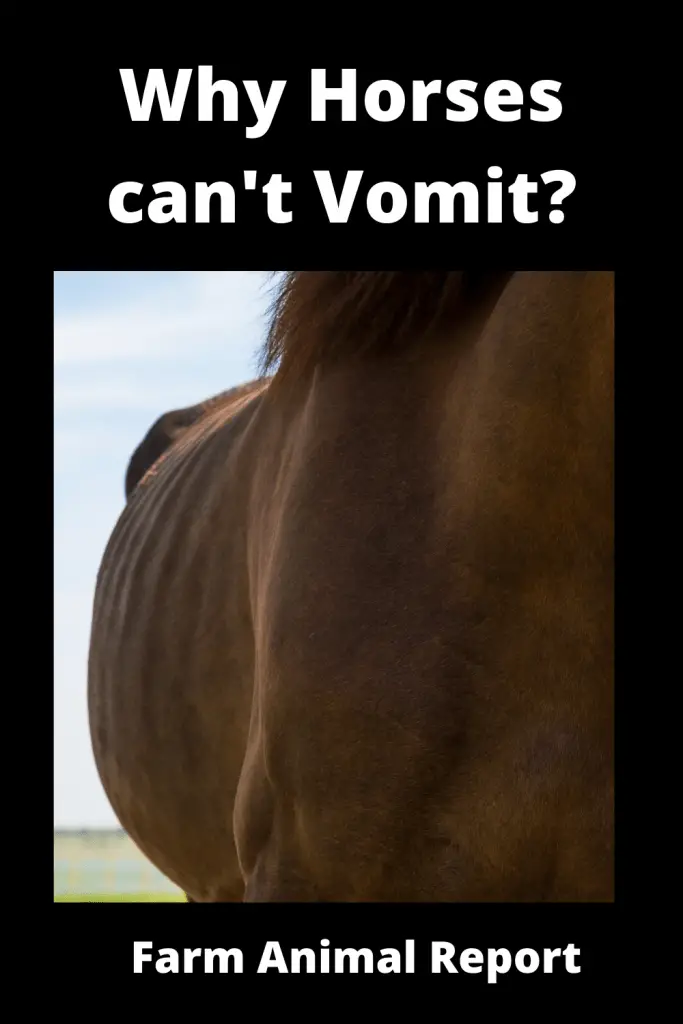
There are other differences, as well. Humans tend to be omnivores, with some who prefer to be herbivores and others who prefer to be carnivores. The truth is, we can eat both. If you take a look at a horse’s mouth, you’ll notice that the teeth are mostly grinders. They don’t have fangs and some don’t even have incisors. Their teeth were made for eating grass, hay, and other plant material.
Horses aren’t obligate herbivores; there are a few cases where a horse has stolen someone’s cheeseburger, but that is rare. Most, if not all of the calories they consume come from the plant kingdom. They do like coffee and soda, though…
Moving on to the stomach, comparing the size of our stomach per body size and theirs per body size, their stomachs are tiny. It fills up fast and empties just as fast. Most of the horse’s digestion takes place in the large intestines, where the food ferments. Ours also ferments there, but by then most of the digestive process has taken place. The main job of the large intestine in humans is to take water out of the stool.
Differences in eating
Give up steak? Never have shrimp again? A lot of humans would look at a diet without any sort of animal protein as impossible. In some places, folks think they need meat three times a day and that gravy goes on everything. There are, of course, a lot of folks that eschew any animal protein… but they are not the norm.
How would you like to need to eat twenty-two thousand calories a day? Those of us who have ever restricted calories for any reason will look at that number with a degree of longing. However, humans aren’t horses.
A minimum calorie requirement for a horse is that number. If they are working, the number can go up well over thirty thousand calories. All of this, mind you, without meat.
Here is a little-known thing that horses and humans have in common. Ours is much weaker, but both have an instinctive need to chew. This may be somewhat individual, but chewing sugar-free gum while restricting calories can help with food cravings for humans.
In horses, the need is so strong they will eat things they shouldn’t. Mear ate the fence of her paddock. In places, only splinters held it together. This is after she ate all of the grass, followed by all of the weeds that were available. She even ate leaves from trees. Thankfully we made sure that none of them would hurt her.
In order to eat that many grass calories, horses eat at least seventeen hours per day. They can end up overeating if they are given a lot of grain, but usually, they don’t. A lot of horse owners who have horses that can’t get to a green pasture will put up hay nets so the horses don’t eat too fast. The nets mimic what would be a mouthful in a pasture.
Oddities
As mentioned, there are oddball horses. There is one breed that actually eats salted fish during the winter. The Icelandic horses eat this, in part because it is what’s available and in part to get the salt. This is something all horses need… salt. Many owners will have both a salt block and a mineral block for the horses to lick. Please do not try them yourself; they do not taste good at all.
What Causes Colic?
In Mear’s case, the clue was the overturned, empty water barrel. Lack of water can cause impaction colic. However, there was an additional factor. We were lucky there wasn’t an impaction. That might well have required surgery. It is more likely that another risk factor played a bigger role; stress.
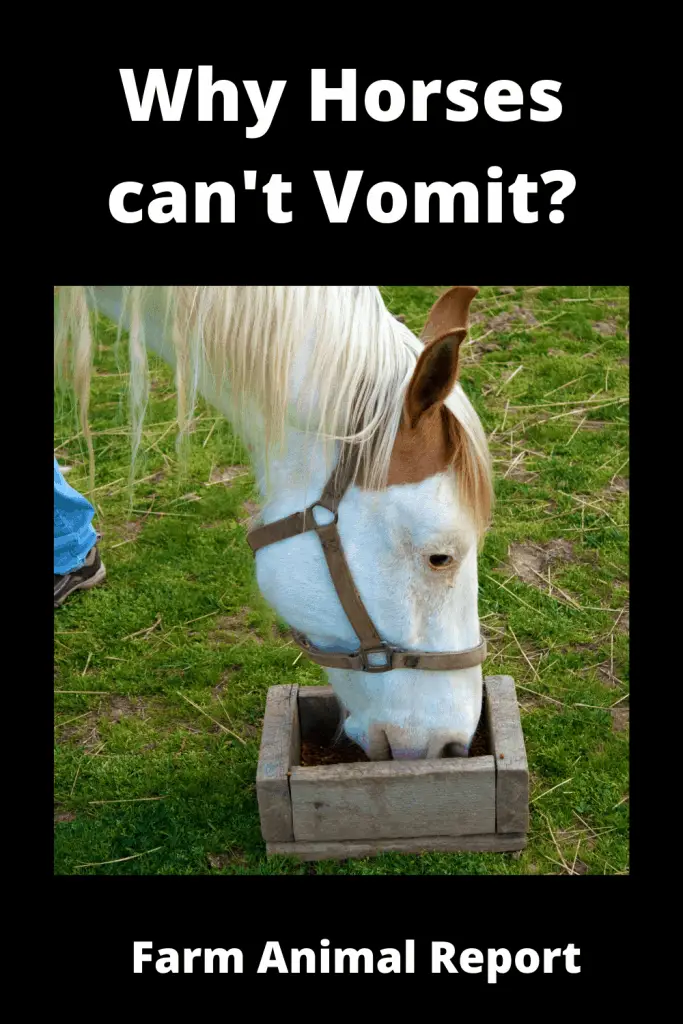
Stress
You might wonder what could cause a horse to become stressed. They are big animals, what could scare them or cause them to worry? The answer to that is a lot of things. Horses are easily frightened. Most owners refer to it as “spooking,” and they can spook at anything… including a piece of paper on the ground.
Horses don’t see the way we see, so objects that are ordinary to us may seem extraordinary to them. Even if it is a somewhat familiar item, if it is in the wrong place at the wrong time, it can scare them. If it scares them bad enough, that can cause colic.
If you remember, previously there was a comment about feeding horses too much grain. Horses need forage; hay or grass more than they need grain. Feeding them grain is a treat and should be regarded as such. Overfeeding the grain without adequate forage sources will often lead to colic.
If you’ve been around horses and horse owners, you may have seen how carefully they look at the hay or grain before they give it to the horse. You may also have noticed that they carefully walk the pasture, looking at the ground and at the things just outside the fencing. There is a good reason for this.
Moldy hay, tainted grain, and some plants can cause colic and/or other serious problems for horses. Even if it was fine the day before, damp air or other factors could lead to mold starting to form overnight. A stray seed can become a dangerous plant in a few days. Stray leaves from trees like the black walnut could get into a pasture. That is what the owners are looking for.
There are other things that horse owners are looking for, particularly if they are living in a sandy area. Ingesting too much sand or dust can cause problems, including colic. Horses may get some sand from eating pasture grass grown on sandy soil, but that which is found concentrated in hay can be worse.
Most mammals have something of a problem with this next one; horses have it worse only because they can’t throw up. Abruptly changing the diet can cause this problem. That includes when they move to a new home; typically the previous stable will send along some of what the horse had been eating. It is then mixed in with the news feed so that the horse can get used to it. This includes a sudden change in hay sources.
That may seem odd, but it is reasonable. Different soil types have different amounts of nutrients in it. Going from sandy soil hay sources to hay grown in clay can create enough of a difference to cause problems. This is an important distinction.
While horses can’t use all of the NSAIDs humans can, they do need them from time to time. Also like humans, they can cause problems. Long-term use of nonsteroidal anti-inflammatory drugs in horses is known to lead to colic. Overdosing may also do that.
Because horses have an almost constantly working digestive system, they create a lot of horse apples. Said horse apples draw a lot of flies. This is one reason why you may see horses with face masks on as well as light mess “sheets.” Those are called fly masks and fly sheets. They are to protect the horse from getting parasites and other problems from the flies.
However, even the best horse owner may have that one horse that will never keep it on. Perhaps they will forget one day, even if the horse doesn’t mind the mask. That leaves the horse ripe for developing parasites as well as some nasty fly bites that can become infected. Intestinal parasites can cause colic. Prevention is the key, and veterinarians recommend regular worming to prevent it.
The last of the really common causes of colic is teeth. Horse teeth don’t stop growing; they’re needed to chew the roughage that consists of their food. However, horses can have overgrown teeth, cavities or other dental problems.
What to do for Colic
Learn the signs: This was one advantage we had. Two of us knew the signs of colic and what to do.
Horses with colic will try rolling in order to get rid of the pain.
It doesn’t help and can cause serious, fatal harm. They may also be skittish, even if they weren’t before. Rolling and walking in circles are two of the biggest signs.
Don’t panic: Panic never helped in any situation. This requires action and it requires calm. The horse will sense agitation and may copy it. Take a deep breath. Focus all of your attention on what needs to be done. You can panic when it’s all taken care of.
Call the vet: If there is more than one person available, have them call the vet because the next two steps are vital. However, most of the time a vet is going to be required if only to make sure that it is minor. They have the knowledge and equipment to find out what’s going on in the horse’s belly and the drugs to make it easier to cope with.
Remove food and water: Wait, what? Yes. Lack of water can cause it but ingesting anything after colic develops is a recipe for disaster.
Even after the colic itself is handled, there will be an amount of time the vet will recommend withholding food and water.
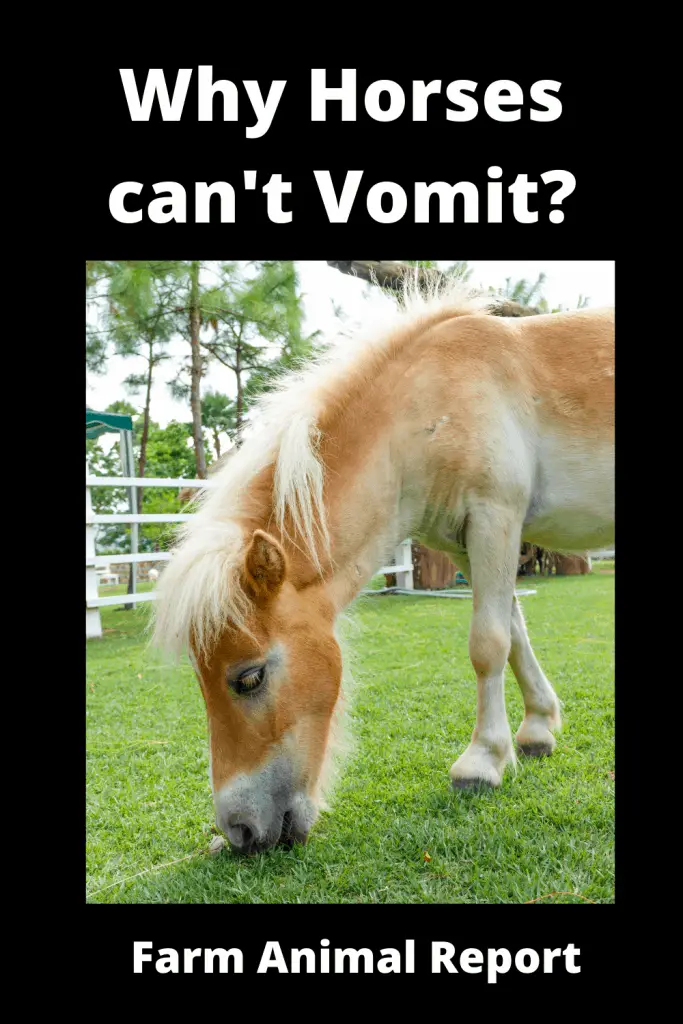
Walk the horse: Do not let the horse lay down. Do not let it roll. It can walk in circles if that’s what it wants to do, but walking is critical. In fact, after treatment, the vet may want it to walk a little more. This is harder than it sounds. Even if you are a larger human, the horse will outweigh you by several hundred pounds and they can be stubborn. Let me repeat, walk the horse.
Stand back: When the vet arrives, the last thing he or she is going to need is a lot of “helpful” advice. Answer any questions as fully as possible and do stay nearby. However, unless the vet asks for help, he or she doesn’t need it.
There are several questions likely to come up. The vet will want to pinpoint the cause of the colic. If you don’t know for certain, say so. However, make sure to have as much information as you can. When was the last time you fed/watered the horse? Is it a new feed or feed supplier? How old is the horse? When was its last physical? Any information could help.
What if…: There are times when colic is a much bigger problem than the one we had. Ours was bad enough and cost several hundred dollars. However, as we were watching her work, the vet began to talk seriously about possibly surgical intervention.
Would we have done it? Yes, because we loved the horse. However, thankfully it didn’t come to that. However, that is one of the “what ifs” that come along with horse ownership and colic. It’s a good idea to know where the closest equine hospital is and how much emergency surgery would cost.
The next “what if” is harder. Sometimes the gut has already twisted before the horse is found. This is called twisted gut colic. To understand this completely, keep in mind that a horse’s colon is not the same shape as ours. Theirs is U-shaped, and it can get twisted fairly easily. Fifteen percent of colic cases involve some sort of twist here.
There are a lot of “ifs” that can mean the difference between life and death. If it’s caught early, if it’s twisted less than two hundred seventy degrees and if emergency treatment happens the horse has a chance. Take out any of those “ifs” and the chances lessen dramatically.
A twist of over two hundred seventy degrees can do two things. The first is it closes off the blood supply to the colon. This can cause the tissue to do. The second thing it can do is rupture, spilling all kinds of toxins into the horse’s abdomen. That can be swiftly and fatally toxic.
The last “what if” is “what if it’s already too late.” This is the hardest part of owning any animal. Most of them have much shorter lifespans than we do and eventually, they will die. If it is already too late, that is what will happen. The vet can make it less painful for the animal, but the pain for the owner is just beginning.
How to Prevent this Problem
The first thing to know is that it may be impossible to prevent all forms of colic. However, as a horse owner, it is important to do your best. The most important first step is to learn as much as you can about horse anatomy, not just the digestive system. The more you know the easier it is to note where problems could occur.
Where you live may change the types of colic likely to occur, so learn a bit about that. Where is the feed grown? Does the state require fields to be free of toxic plants such as yellow starthistle? Did the hay get wet at any point after it was cut? Did it dry properly? What type of soil is around?
Like other horse owners, you will need to walk the paddock area to check for poisonous plants or stray leaves that are toxic to horses. We have to worry a lot about avocado leaves as well as black walnuts. In other locations, locust trees and other varieties are more prevalent. If you don’t recognize a tree, talk to your neighbors or other horse owners.
On that score, you can do what we did when our children were little. We had one that would eat anything. Poison control and the doctor need the name of the plant to know if it’s toxic. I’d take it to the nursery and they would say, “Well, it won’t kill a horse…” They may not know if it will kill a child but they know all of the plants that would harm your horse.
Part of the horse budget should include “well horse checks.” The vet will check teeth, worm the horse and give it the necessary shots. In some states, the horse owner can do both of the last two, but the vet is the one who needs to look at the teeth.
Make sure the horse has access to plenty of clean water and the right type of food. After this, we installed an automatic waterer for her and didn’t have any more difficulties that way. However, it did leak… but that’s another story.
Most of all, get to know your horse well. Know what stresses it, what spooks it, and what it eats. If you drink coffee, beware that your horse can very cleverly drain it and its neck is longer than you think. The same goes for soda, and too much sugar is as bad for a horse as it is for humans.
With all of these tips, you will be ready to prevent colic and to take care of a horse that manages to get it anyway. That is the best you can do for an animal that can’t throw up what upset its stomach.


